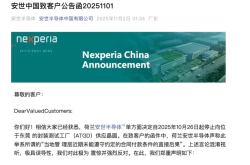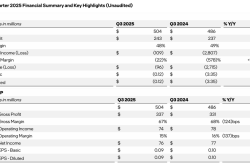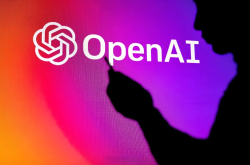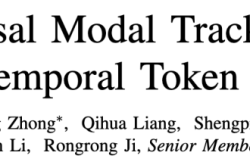What's the Implication of OpenAI Sending a "Distress Signal" to the U.S. Government?
![]() 11/10 2025
11/10 2025
![]() 460
460
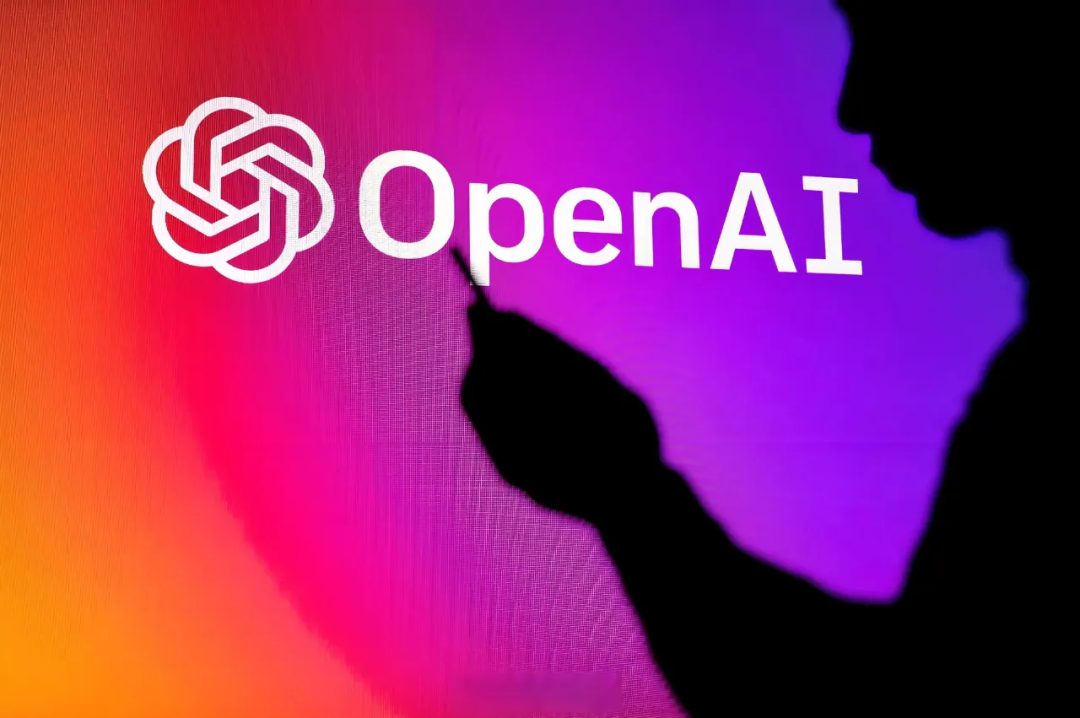
Last week, Sam Altman posted on X (formerly known as Twitter) that OpenAI anticipates its annual revenue will reach $20 billion by the end of the year and "will soar past hundreds of billions of dollars before 2030." Three days prior, its CFO hinted that the government should "guarantee" the company's infrastructure loans. However, she later backtracked, stating that she had "misspoken."
In reality, a more critical and market-overlooked development took place a week earlier. OpenAI's head of global affairs sent a letter to the White House, requesting that tax credit policies initially aimed at semiconductor factories be extended to AI data centers, server manufacturers, and electrical transformers.
The company claims it intends to invest $1.4 trillion in capital expenditures over the next eight years. For context, this figure surpasses Mexico's annual GDP and is equivalent to a startup spending approximately 5% of the U.S. GDP solely on building computing infrastructure for training larger language models.
As the world's most prominent AI superstar, what does OpenAI's rare series of "distress signals" to the U.S. government signify?
There's nothing truly novel under the sun. Only two possibilities lie behind this: Either OpenAI has indeed discovered a viable return path that justifies large-scale public subsidies, or it has constructed a financial framework that cannot survive without continuous government intervention.
On October 27, OpenAI's letter to the White House unveiled a structural dilemma. Currently, the "Advanced Manufacturing Investment Credit" (AMIC) provides a 35% tax break for semiconductor manufacturing investments. OpenAI hopes to extend this benefit to AI data centers, AI server production, and critical power grid components, including high-voltage transformers and the specialized electrical steel required for their production.
This request sheds light on a problem that OpenAI hasn't explicitly stated elsewhere: The bottleneck is no longer chip supply but rather electrical infrastructure, whose construction timelines are measured in "years" rather than "quarters." A modern AI training cluster consumes more electricity than a small city, while the transformers needed to power it have manufacturing cycles spanning 18 to 24 months.
According to OpenAI's letter, the U.S. lacks a domestic supply chain for the steel used in these transformers. This is no longer a problem that can be solved by the software economy. OpenAI is operating infrastructure on a utility scale while still attempting to maintain the high valuation multiples of a tech company.
The AMIC extension request essentially seeks to have the government reclassify AI data centers as strategic manufacturing, placing Nvidia GPU-equipped server racks in the same policy category as TSMC's Arizona factory.
This distinction is crucial: Semiconductor factories produce components that serve the entire economy, whereas OpenAI's data centers generate computing power primarily for its own models. Expanding tax credits socializes capital risks while keeping profits private.
On November 6, OpenAI CFO Sarah Friar's remarks at a Wall Street Journal event triggered a public relations crisis. She suggested that the government should "provide guarantees to facilitate financing." Her phrasing was cautious and vague, potentially referring to direct loan guarantees or broader infrastructure support.
The backlash was swift and intense.
White House AI advisor David Sacks responded directly: "There will be no federal bailout for AI." Republican governors and Democratic senators united in opposition, arguing that this would amount to shifting OpenAI's risks onto the public. Friar later retracted her statement on LinkedIn, claiming she had "misspoken" and emphasizing that OpenAI was not seeking government guarantees.
Sam Altman promptly issued a lengthy post, stressing that the company neither received nor desired government guarantees for its data centers. He limited the government's role to supporting semiconductor manufacturing and domestic chip supply chains, rather than backing OpenAI's infrastructure debt.
The issue is that OpenAI's October 27 letter explicitly discussed loan guarantees, grants, and cost-sharing agreements for AI supply chain manufacturers. It advocated for direct federal funding to "reduce delivery times for critical power grid components from years to months" and even proposed that the government establish strategic reserves for materials like copper, aluminum, and rare earths needed for AI infrastructure.
This is no mere semantic debate: OpenAI either wants direct federal funding for its construction or seeks to reduce construction costs by 35% through tax incentives. Both scenarios involve government funds. While loan guarantees and tax credits may differ in accounting treatment, to the public, when a startup requests subsidies exceeding the annual budgets of many countries, such distinctions become irrelevant.
Bloomberg noted that OpenAI's spending plans "are under scrutiny as the unprofitable startup seeks creative financing arrangements—including structures criticized as 'circular transactions.'"
This warrants further elaboration.
OpenAI has announced partnerships with Oracle, SoftBank, and Microsoft to build data centers and procure GPUs. Many of these deals are structured such that OpenAI commits to purchasing computing power from infrastructure it co-finances, with revenues generated depending on products running on that same infrastructure. For instance, Microsoft invests in OpenAI, provides Azure computing power for training, and earns revenue from ChatGPT and API sales.
This model may function smoothly when growth is steady, but what if customer acquisition costs outpace revenue growth? What if GPT-5 trains for eight months with only marginal improvements over GPT-4? At that point, circular transactions will resemble less sophisticated financial engineering and more a house of cards—where every participant is simultaneously a creditor and debtor.
Federal support would then cease to be a policy option and become a bailout. OpenAI is essentially signaling to Washington: Our committed infrastructure spending exceeds private financing capacity, but for the national good, this construction must proceed.
A startup committing $1.4 trillion to infrastructure has few precedents. Such scale rivals sovereign projects, not venture-backed enterprises. The latter are typically explicit government programs justified by public interest, without needing to first prove market viability.
OpenAI's attempt resembles SpaceX's Starlink but requires an order of magnitude more funding, with a less clearly defined customer base. Starlink succeeded because rural broadband demand was explicit and the willingness to pay was measurable.
OpenAI's bet rests on three assumptions: Continued exponential improvements in model capabilities, long-term corporate demand for AI services, and profit margins sufficient to cover infrastructure costs, including regional grid upgrades. If any link fails, the entire logic collapses. The urgency of AMIC lobbying suggests that OpenAI's management has run the numbers and sees a funding gap.
In the optimistic scenario, OpenAI meets its revenue projections: The company hits $20 billion in annual revenue by December and sustains growth, justifying infrastructure investments retroactively. AMIC expansion approval reduces AI hardware costs. OpenAI successfully transitions from a startup to an industrial-scale operator. Five years later, government tax credits are viewed as a wise policy that helped secure U.S. AI leadership.
The middle scenario is more complex: Revenue grows but falls short of expectations. The collapse scenario then becomes self-evident: Model progress stalls, corporate AI adoption lags, and OpenAI cannot fulfill infrastructure commitments. Circular financing chains break, exposing the company's health as dependent on a collective illusion.
Microsoft could absorb OpenAI through acquisition, leaving other investors with losses. Alternatively, Washington might intervene directly, nationalizing the technology while retaining operations—or the company could collapse, with core researchers fleeing to Anthropic, Google, or emerging startups learning from OpenAI's mistakes.
The contrast between lobbying strategies and public disclosures is striking.
Companies with sustainable models typically don't seek CHIPS Act-style interventions before proving market existence. Sam Altman projects confidence and growth curves externally, while his policy team demands industrial support for manufacturers that haven't yet crossed the "death valley" of commercial viability.
OpenAI has built a precision machine with little tolerance for error: Software companies can afford trial and error; infrastructure businesses cannot. The $1.4 trillion commitment is either a negotiating tactic to secure government support or an acknowledgment that private markets cannot meet its financing needs on affordable terms.
If so, as market participants, we must remind ourselves: The risk of collapse is no longer hypothetical. The question is only when the music stops.


